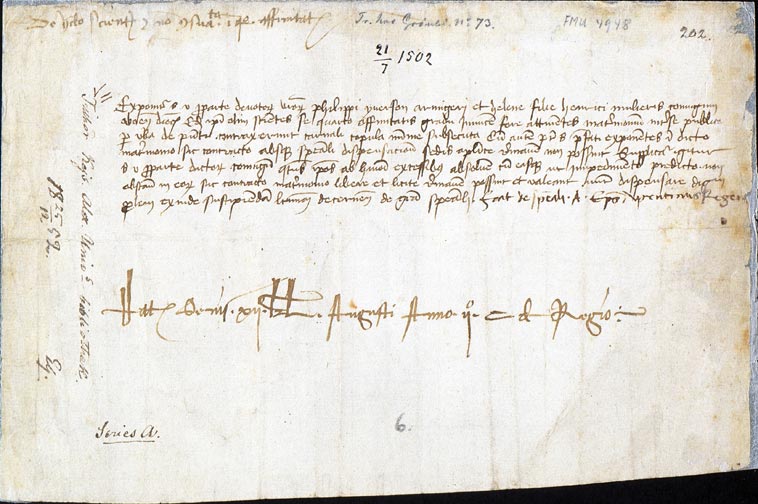Requête au pape

National Library of Finland, Scheelska samlingen, FMU 4948.
Marriage has been considered a "worldly thing" since Luther. While church marriage is optional nowadays, in the Middle Ages, the marriage was concluded by the church and could only be dissolved again with papal dispensation. Church law regulations regulated the degree of kinship in which the engaged couple were allowed to be married. This was done not least to prevent endogamous and often incestuous marriage practices, which often occurred in noble families.
According to canon law, since 1215, too close kinship is within the 4th degree of kinship, e.g. in consanguinitas (consanguinity): siblings, cousin/cousin up to and including the 3rd degree, uncle/niece, father/daughter, grandfather/granddaughter. Another obstacle to marriage was affinitas (relationship by marriage, brother-in-law) or when a man wanted to marry the sister of his deceased wife. A spiritual relationship (cognatio spiritualis) could also be an obstacle to marriage, or the relationship between godfather and goddaughter.
If a couple considered too closely related wanted to marry, they needed to receive dispensation from the Pope. If they had already gone to the altar without permission, they also needed a papal absolution. The appropriate papal authority that issued such dispensations was the Apostolic Penitentiary, the office with the authority to grant forgiveness. However, not all degrees of kinship were dispensable - vertically related persons such as father/daughter received no dispensation.
